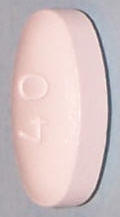RIKLBLOG
|
| Tomorrow |
| 08 June 2006 |
| Yesterday |
| Index |
| Eventide |
| SETI League |
| PriUPS Project |
| Bonus! |
| Contact |

Fun With Fractions
<DISCLAIMER>I am not a doctor. This is not medical advice. In fact this isn't advice at all, it's just a little mathematical exercise in which I just happen to use several Lipitor pills as exemplars. You could use anything that is readily divisible and whose price doesn't seem to vary by amount. For example, if you could buy a one-ounce gold coin for $500, or a two-ounce, four-ounce, or eight-ounce gold coin for $680, not only would the pictures be prettier and more symmetrical, the numbers might be fairly similar, in a proportional sort of way.
If I happen to say anything about "dose" or "pharmacokinetics" or "furanocoumarins," I'm most likely either babbling or, for the last, proving I read Science News.
<DISCLAIMER>The analysis below is based on what I consider to be common sense. I.e., it could be wrong, perhaps dangerously so for some people. If you have a factual basis for disagreeing with anything I say here, let me know and I'll add your argument.</DISCLAIMER>
Lipitor is drug taken for the chronic condition of having too much cholesterol in your blood. Its manufacturer, Pfizer, offers it in 10mg, 20mg, 40mg, and 80mg tablets. Typically one's first prescription is for 10mg, and that is often sufficient to correct the condition. There are rare but potentially serious side effects that increase with dose, so it is obviously better to take as little as one needs.
Lipitor is expensive. These retail prices were offered at Drugstore.Com on 04 June 2006, and are what one would pay without insurance. I gratuitously offer a photo of a 40mg tablet, a 20mg tablet, and a 10mg tablet, along with some examples of what happens when you apply an Exacto knife to the larger ones. A 40mg tablet seems to be able to create four 10mg tablets in a spasm of self-sacrifice.
|
 |
||||||||||||||||||||
So it would seem that one has the option of paying 38 cents per day for the same quantity of active principle that would otherwise cost $2.50 per day. Aren't fractions wonderful? While many people would consider $.38 per day for something that may prolong their life worthwhile, it is only uninsured people who have this privilege. Insurance will typically pay everything over the first $10 or $20 worth of a particular prescription pharmaceutical. Without belaboring the arithmetic, and noting that some insurance "plans" allow one to purchase 90 days worth of prescription for a single "co-pay," that brings the daily price of this drug down to little more than a penny a day under the best plans (90 80mg tabs, or 720 days worth for $10) or to a bit less than a dime a day for the others (30 80mg tabs, 240 days worth for $20).
But Wait!
What if there were a way to cut that almost-dime by half, or the penny-plus into mils? Perhaps there is, and it's called "furanocoumarins." Just last week it was announced that these chemicals, contained in grapefruit juice, are the ones that have an effect on the pharmacokinetics of statin absorption, as well as that of a number of other drugs. It has long been recognized that those who take statins should not consume grapefruit juice; now it is known precisely why.
|
|
And yet, an interesting thing about these interactions is that some of them enhance the effectiveness of the drug by keeping it in your system* longer. If you are not just cheap but recklessly so, you might want to research these interactions and consider reducing your dosage by half again. Those embodying just ordinary parsimony will probably stick with the pennies-per-day regimen which is a bit more predictable. |
To summarize, then, it seems to me that substantial savings are available to everyone who doesn't have the misfortune to have no insurance and requires a daily 80mg dose of Lipitor. The one argument against fractionating this medication which might make sense, i.e., that the exact dose is critical, clearly makes no sense for drugs that are offered in 100% increments. Another argument is valid but not applicable here for obvious reasons: inhomogeneous drugs should not be disassembled.
In proofreading the above, I realized that it isn't terribly entertaining. Also, it's pretty obvious. I don't think the possibility of splitting pills is a secret, so I'm not charging for this blog. But it is kind of interesting that, depending on your zeal and your insurance status, the cost of an identical commodity varies over a range of over 250 to 1, even to the point where the grapefruit adjuvant will cost more than the drug! If you're wondering why this is, the answer is also obvious: Healthcare is screwed up. In more ways than I can count, much less review. Even more bizarre, and despite the plans — from the flawed to the truly preposterous — of the politicians, it can't be fixed. Yes: There is actually no solution! But that won't stop me from offering unworkable suggestions in future blogs.
*This is not the same "system" against which I have inveighed in previous blogitems, the one that dictates that after you are born eventually you will die.
Follow-up 02 August 2006
Confirming my suspicion that the Grapefruit Solution might be a bit reckless was a letter entitled "Squeeze, please" in Science News of 29 July 2006. In response to a reader making a similar suggestion:
"This is probably not a good strategy," says researcher Paul B. Watkins of the University of North Carolina at Chapel Hill. Both the ingredients in juice and people's reactions to them are too variable to guide a precise reduction in drug doses.
| © 2006 |
| Richard Factor |
